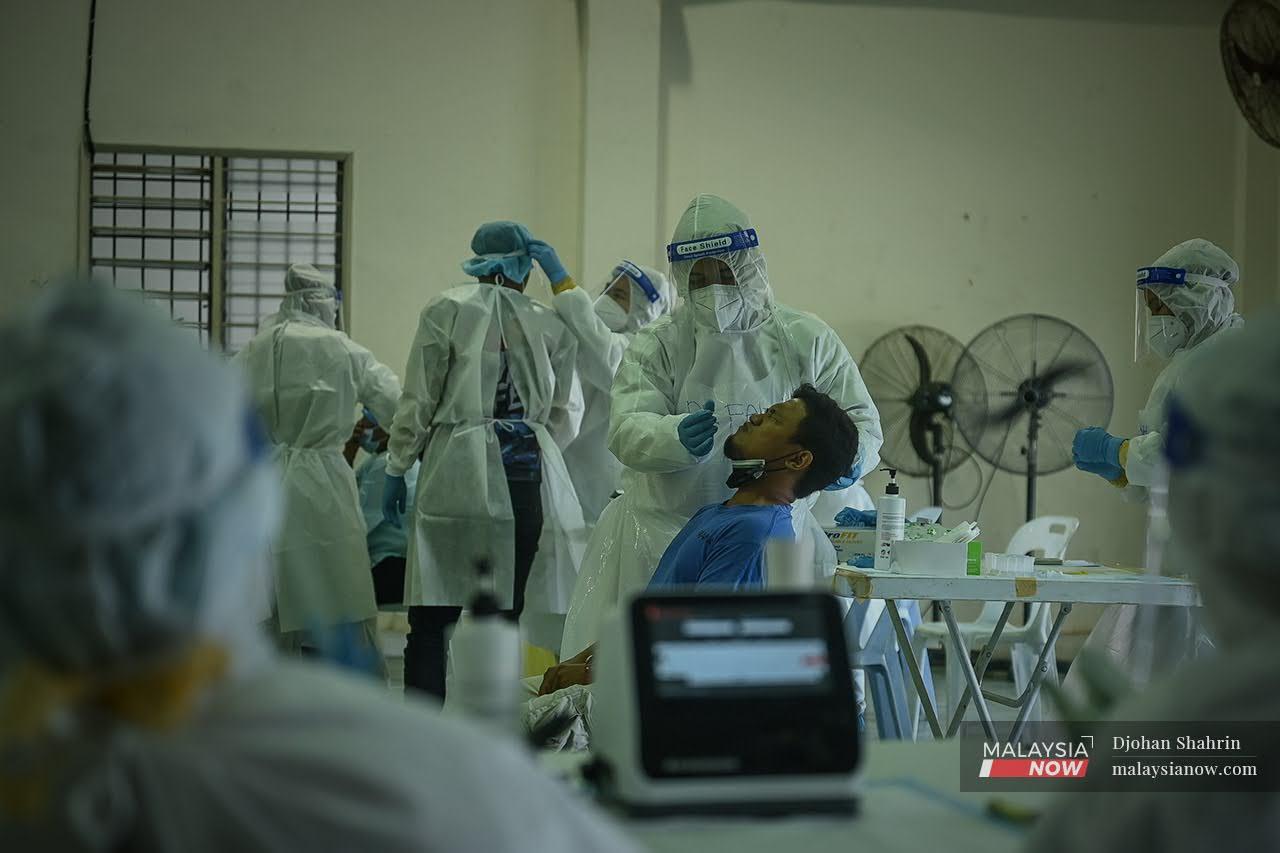The science behind ‘gold standard’ Covid-19 test
Health ministry expert says measures were put in place long ago to address the issue of false positive results from the RT-PCR test.
Just In
A government medical expert has sought to allay fears of false positive results from the main screening method used to diagnose Covid-19 as daily cases remain in the four-figure range despite the movement control order (MCO) implemented earlier this month to curb the spread of infections.
The Reverse Transcription Polymerase Chain Reaction test, better known as the RT-PCR test, is seen as the gold standard for diagnosing the virus. It works by detecting the presence of viral RNA in the body, and can detect Covid-19 even before the person becomes infectious.
But concerns have arisen of late over the sharp spikes in positive cases even with the MCO which saw the bulk of the retail sector closed and only critical and essential services allowed to continue.
Despite efforts by health authorities to reduce the number of cases to a manageable level, the country’s infectivity rate or R-naught remains above 1.0.
Concerns of the test yielding false positive results – a positive diagnosis despite no infection present – are due to several factors including a component used in screening known as the cycle threshold or Ct value.
The screening process begins with the collection of nasopharyngeal swab samples or nasal secretions.
Studies show that a high Ct value of 40 and above will likely reduce the specificity of the test.
These are tested by trained medical officers who look for traces of viral RNA by adding a biochemical reaction mixture. A positive reaction detects an accumulation of a fluorescent signal in the RT-PCR machine.
The Ct value is the number of cycles required for a fluorescent signal to cross the threshold.
Studies show that a high Ct value of 40 and above will likely reduce the specificity of the test. This is because a high Ct shows a low amount of viral genetic material in a sample whereas a low Ct would show a high amount of viral genetic material.
The expert said the cut-off Ct value used by the ministry in RT-PCR screening is 35. However, a value of 30 and above can be considered non-infective depending on the clinical assessments conducted.
“These test results should only be interpreted by trained medical officers to maintain accuracy,” the expert told MalaysiaNow on condition of anonymity.
He added that the issue of false positive results had been addressed in April last year, when the ministry kept patients until they could show two negative PCR results within 72 hours.
He said the ministry is aware of the effects a high Ct value could have on test results, adding that the necessary arrangements are in place to prevent this.
In the case of patients with high pre-test probability – the chance that he or she has the disease before the test results are known – high specificity tests are used, he added.
“These test results should only be interpreted by trained medical officers to maintain accuracy.”
“For example, a cohort of factory workers with a high positivity rate, or in Sabah where incidence is higher.
“We deploy Rapid Test Kit (RTK) Antigen tests that have a high specificity value to reduce the time needed to diagnose, treat and isolate,” he said.
But in clinical settings, he said, medical officers might not rely fully on the test results as they are aware of the limitations.
Unlike the RT-PCR, the RTK Antigen test detects viral proteins in the body, revealing patients at the peak of infection when the body has the highest concentration of viral proteins.
While it is affordable and can provide results in less than an hour, it might not detect the infection at the early stage, unlike the RT-PCR.
“This may cause false negative results and a false sense of security,” the expert said.
Subscribe to our newsletter
To be updated with all the latest news and analyses daily.
